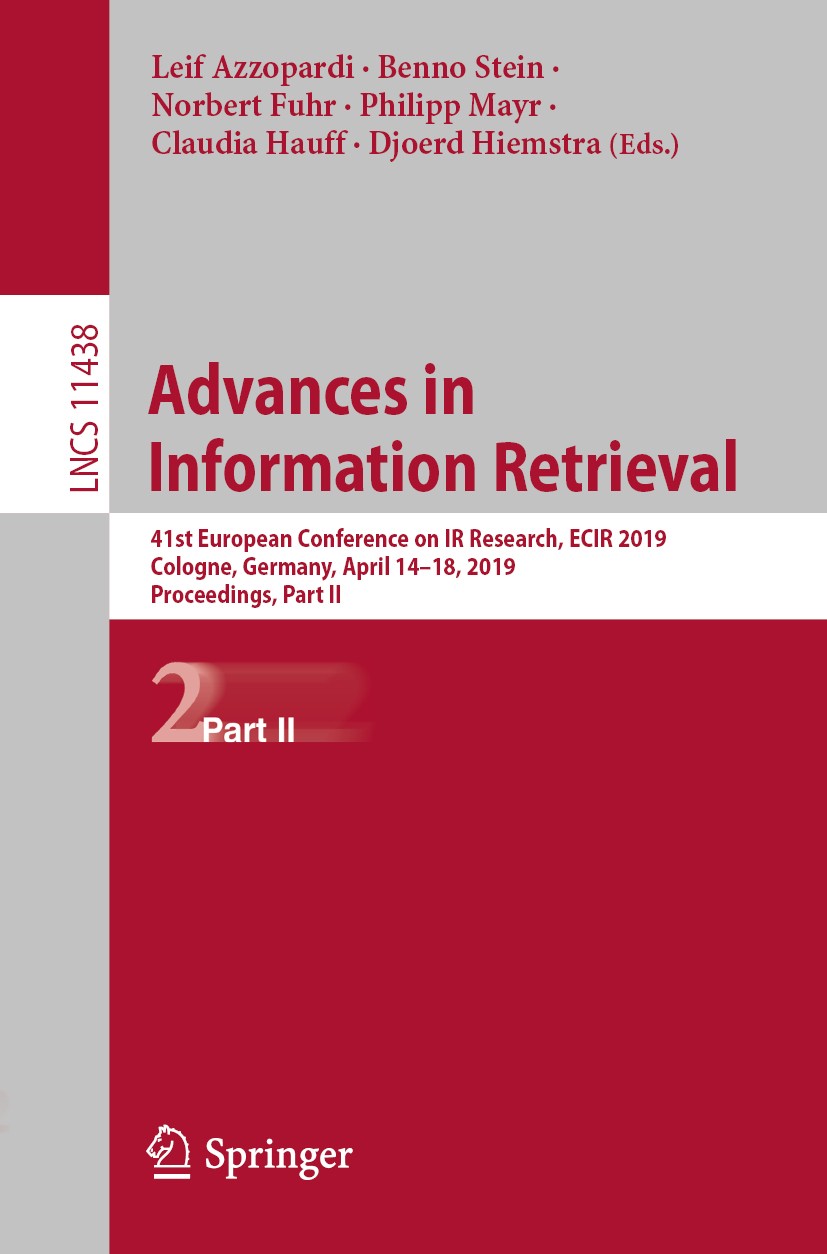| 期刊全称 | Advances in Information Retrieval | | 期刊简称 | 41st European Confer | | 影响因子2023 | Leif Azzopardi,Benno Stein,Djoerd Hiemstra | | 视频video | http://file.papertrans.cn/149/148355/148355.mp4 | | 学科分类 | Lecture Notes in Computer Science | | 图书封面 |  | | 影响因子 | .This two-volume set LNCS 11437 and 11438 constitutes the refereed proceedings of the 41st European Conference on IR Research, ECIR 2019, held in Cologne, Germany, in April 2019.. The 48 full papers presented together with 2 keynote papers, 44 short papers, 8 demonstration papers, 8 invited CLEF papers, 11 doctoral consortium papers, 4 workshop papers, and 4 tutorials were carefully reviewed and selected from 365 submissions. They were organized in topical sections named: Modeling Relations; Classification and Search; Recommender Systems; Graphs; Query Analytics; Representation; Reproducibility (Systems); Reproducibility (Application); Neural IR; Cross Lingual IR; QA and Conversational Search; Topic Modeling; Metrics; Image IR; Short Papers; Demonstration Papers; CLEF Organizers Lab Track; Doctoral Consortium Papers; Workshops; and Tutorials.. | | Pindex | Conference proceedings 2019 |
The information of publication is updating

|
|
 |Archiver|手机版|小黑屋|
派博传思国际
( 京公网安备110108008328)
GMT+8, 2025-11-15 22:17
|Archiver|手机版|小黑屋|
派博传思国际
( 京公网安备110108008328)
GMT+8, 2025-11-15 22:17


